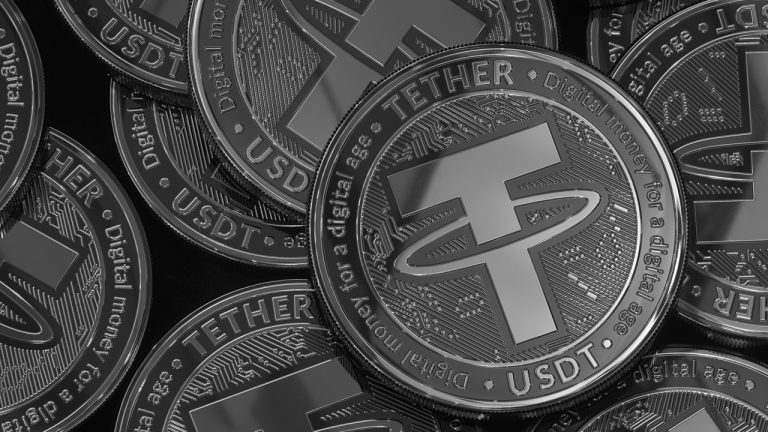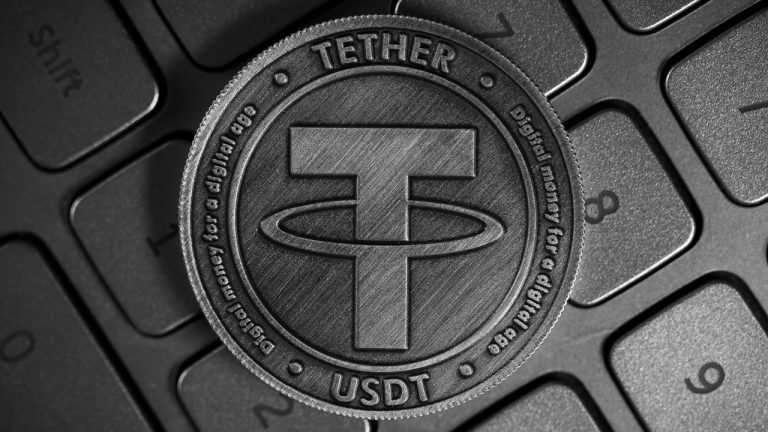 The realm of stablecoins is an ever-evolving landscape and the number of coins in circulation for the stablecoin BUSD has fallen below the 10 billion mark to approximately 9.68 billion on March 3, 2023. Over the last 30 days, BUSD’s token supply has dropped 40% lower. In contrast, the number of tethers in circulation has […]
The realm of stablecoins is an ever-evolving landscape and the number of coins in circulation for the stablecoin BUSD has fallen below the 10 billion mark to approximately 9.68 billion on March 3, 2023. Over the last 30 days, BUSD’s token supply has dropped 40% lower. In contrast, the number of tethers in circulation has […]
The vote was passed to fully collateralize Frax Finance's native stablecoin, thus phasing out its algorithmic backing.
The community of decentralized finance stablecoin protocol Frax Finance has voted to fully collateralize its native stablecoin Frax (FRAX), marking an end to the algorithmic backing of the protocol.
The FIP-188 governance proposal initially posted on Feb. 15 reached a quorum following a 98% vote in favor, according to a snapshot on Feb. 23 — which would change the collateralization model of FRAX.
“The time has come for Frax to gradually remove the algorithmic backing of the protocol,” last week’s proposal read.
Near unanimous vote to move $frax to 100% CR over time.
— 0xChaos (@0xCha0s) February 23, 2023
Seems like @fraxfinance serious about making it clear it’s a stable worth holding with no incentive and completely backed with exogenous collateral.
Will be interesting to see it scale$fxs https://t.co/fSQXpmsge3
It explained that the original protocol included a “variable collateral ratio” which adjusted based on the market demand of the stablecoin. The market would dictate how much collateral was required for each FRAX to equal one United States dollar.
The hybrid model resulted in the stablecoin being 80% backed by crypto asset collateral and partially stabilized algorithmically. This was achieved by the minting and burning of its governance token, FXS, which has surged 12% over the past 12 hours.
Frax is the industry’s fifth-largest stablecoin with a market capitalization of just over $1 billion.
Following the implementation of the proposal, the protocol will not mint any more FXS to increase the collateral ratio and token supply.
“To be clear, this proposal does not rely on minting any FXS to achieve the 100% CR.”
It plans to retain protocol revenue to fund the increased collateral ratio, which includes pausing FXS buybacks.
Related: SEC enforcement against Kraken opens doors for Lido, Frax and Rocket Pool
It will also authorize up to $3 million per month in Frax Ether (frxETH) purchases to increase the collateral ratio. frxETH behaves similarly to a stablecoin but is pegged to Ether (ETH) instead. It facilitates the transfer of Ether liquidity within the Frax ecosystem.
DeFiLlama recently reported on the growth of frxETH over the past month.
FraxETH grew by 46.33% over the past month and now has over 100k ETH tokens locked pic.twitter.com/5NxhKnTHUt
— DefiLlama.com (@DefiLlama) February 20, 2023
The move comes amid what appears to be a wider crackdown on stablecoins in the wake of last year’s catastrophic Terra/Luna collapse.
On Feb. 22, the Canadian Securities Administrators (CSA) published a long list of new requirements for crypto companies and stablecoin issuers wanting to remain legally compliant in the country.
Included on that list were strict rules for stablecoin trading and a prohibition on algorithmic or non-fiat-backed stablecoins.
 While the stablecoin market has seen significant redemptions in the past three months, the supply of tether, the largest stablecoin by market capitalization, has increased by 2.46 billion since mid-November 2022. Tether is the only one of the top five stablecoins by market valuation that has seen a supply increase in the past three months. […]
While the stablecoin market has seen significant redemptions in the past three months, the supply of tether, the largest stablecoin by market capitalization, has increased by 2.46 billion since mid-November 2022. Tether is the only one of the top five stablecoins by market valuation that has seen a supply increase in the past three months. […] It appears that the circulation of the stablecoin usd coin has decreased while tether’s has grown, as the latest statistics paint a contrasting picture. Tether saw a 3% increase in coins in circulation over the last month, while the U.S. dollar-pegged crypto asset usd coin recorded a decrease of approximately 4.9% in the same time […]
It appears that the circulation of the stablecoin usd coin has decreased while tether’s has grown, as the latest statistics paint a contrasting picture. Tether saw a 3% increase in coins in circulation over the last month, while the U.S. dollar-pegged crypto asset usd coin recorded a decrease of approximately 4.9% in the same time […] During the last month, the market capitalization of all the stablecoins in existence dropped by more than 2%, shedding roughly $2.98 billion since the end of October. Statistics show that tether, the largest stablecoin by market valuation, saw its market cap lose more than 5% during the last 30 days. Tether’s market cap slipped from […]
During the last month, the market capitalization of all the stablecoins in existence dropped by more than 2%, shedding roughly $2.98 billion since the end of October. Statistics show that tether, the largest stablecoin by market valuation, saw its market cap lose more than 5% during the last 30 days. Tether’s market cap slipped from […] Over three billion in value was erased from the stablecoin economy during the past 30 days. The trend occurred despite the number of tethers in circulation rising by 2.2% last month. On Oct. 1, 2022, tether’s market capitalization was approximately $67.95 billion, and it’s risen to $69.36 billion since then. Circle’s usd coin, on the […]
Over three billion in value was erased from the stablecoin economy during the past 30 days. The trend occurred despite the number of tethers in circulation rising by 2.2% last month. On Oct. 1, 2022, tether’s market capitalization was approximately $67.95 billion, and it’s risen to $69.36 billion since then. Circle’s usd coin, on the […] Since the Terra stablecoin fiasco in May, the top stablecoins by market capitalization dropped 10.66% from $171.37 billion to today’s $153.09 billion. During the last two months, the top stablecoins by market capitalization have seen little growth remaining at $153 billion since mid-July. For More Than 2 Months Stablecoin Market Caps Stagnate Seeing Little Growth […]
Since the Terra stablecoin fiasco in May, the top stablecoins by market capitalization dropped 10.66% from $171.37 billion to today’s $153.09 billion. During the last two months, the top stablecoins by market capitalization have seen little growth remaining at $153 billion since mid-July. For More Than 2 Months Stablecoin Market Caps Stagnate Seeing Little Growth […]
The richest wallet on the Ethereum (ETH) network increased in value by almost a billion dollars over the past 30 days on the back of strong ETH rallies. According to blockchain tracking service Whalestats, the whale known as Naruto went from a balance of just over $1.98 billion on July 15th to more than $2.96 […]
The post Biggest Ethereum Whale Makes Nearly $1,000,000,000 in Less Than a Month As ETH Cracks $2,000 appeared first on The Daily Hodl.

As long as stablecoin “liquidity is growing proportionally with each other," there won’t ever be true competition between stablecoins, says Frax Finance's Sam Kazemian.
Stablecoin projects need to take a more collaborative approach to grow each other’s liquidity and the ecosystem as a whole, says Sam Kazemian, the founder of Frax Finance.
Speaking to Cointelegraph, Kazemian explained that as long as stablecoin “liquidity is growing proportionally with each other” through shared liquidity pools and collateral schemes, there won’t ever be true competition between stablecoins.
Kazemian’s FRAX stablecoin is a fractional-algorithmic stablecoin with parts of its supply backed by collateral and other parts backed algorithmically.
Kazemian explained that growth in the stablecoin ecosystem is not a "zero-sum game" as each token is increasingly intertwined and reliant on each other's performance.
FRAX uses Circle’s USD Coin (USDC) as a portion of its collateral. DAI, a decentralized stablecoin maintained by the Maker Protocol, also uses USDC as collateral for more than half of the tokens in circulation. As FRAX and DAI continue to expand their market caps, they will likely need more USDC collateral.
However, Kazemian pointed out that if one project decides to dump another, it could have negative effects on the ecosystem.
“It’s not a popular thing to say, but if Maker dumped its USDC, it would be bad for Circle because of the yield they’re earning from them.”
The current top three stablecoins by marketcap in order from the top are Tether (USDT), USDC, and Binance USD (BUSD). DAI and FRAX are both decentralized stablecoins that take the fourth and fifth places among the top.
USDC has had the largest growth over the past year of all three, with market cap more than doubling last July to $55 billion, bringing it nearly within arm’s reach of USDT according to CoinGecko.
Kazemian feels that USDC’s proliferation across the industry and arguably greater transparency about its reserves should make it the most valuable stablecoin for collaboration within the ecosystem.
He called USDC a “low-risk and low-innovation project,” and acknowledged that it serves as the base layer for further innovation from other stablecoins. He said:
“We and DAI are the innovation layer on top of USDC, like the decentralized bank on top of a classical bank.”
Though the FRAX stablecoin is partially stabilized algorithmically, Kazemian says that pure algorithmic stablecoins ”just don’t work.”
Algorithmic stablecoins like Terra USD (UST), which collapsed in a dramatic fashion in May, maintain their peg through complicated algorithms that adjust supply based on market conditions rather than traditional collateral.
“In order to have a decentralized on-chain stablecoin it needs to have collateral. Doesn’t need to be overcollateralized like Maker, but it needs exogenous collateral.”
The death spiral in Terra’s ecosystem became evident when UST, which is now known as USTC, lost its peg.
The protocol started minting new LUNA tokens to ensure there were enough tokens backing the stablecoin. Rapid minting drove down the price of LUNA, now known as LUNC, which sparked a complete retail sell-off of tokens, dooming any hopes of re-peg.
Related: Liquidity protocol uses stablecoins to ensure zero impermanent loss
In the weeks leading up to the UST depeg, Terraform Labs founder Do Kwon stated that his project needed to fractionally back the stablecoin with different forms of collateral, especially BTC.
“At the end, even Terra realized that their model wouldn’t work,” Kazemian added, “so they started buying up other tokens.”
By the end of May, Terra had sold nearly all of its $3.5 billion worth of BTC.
Terra took down other projects in its wake, including fellow algo stablecoin DEI from Deus Finance, which also has failed to return to the dollar peg as of the time of writing.